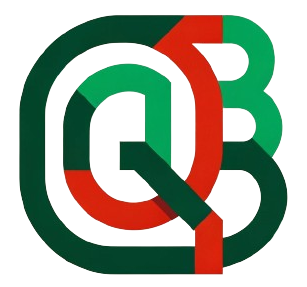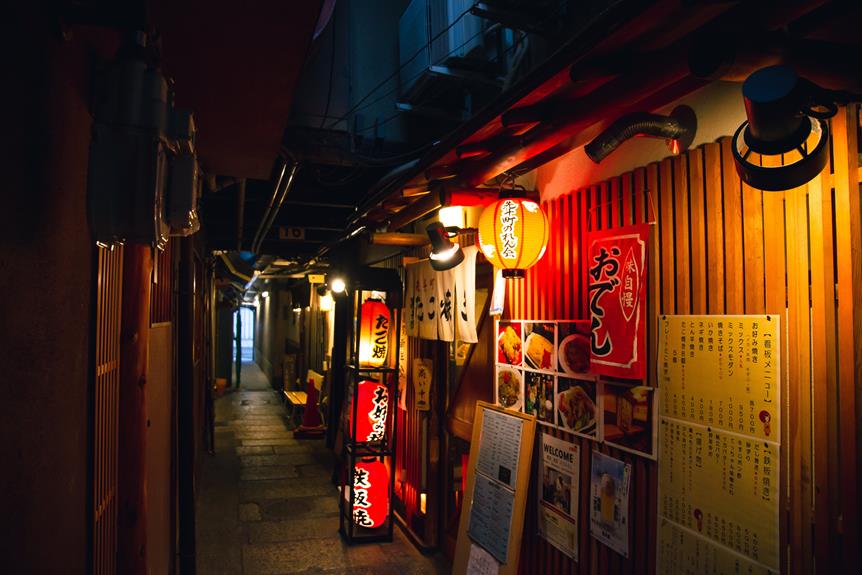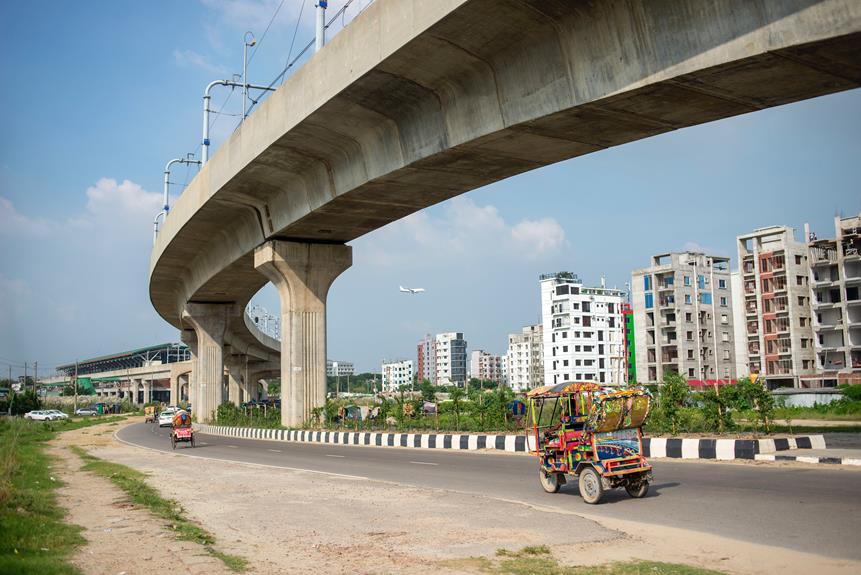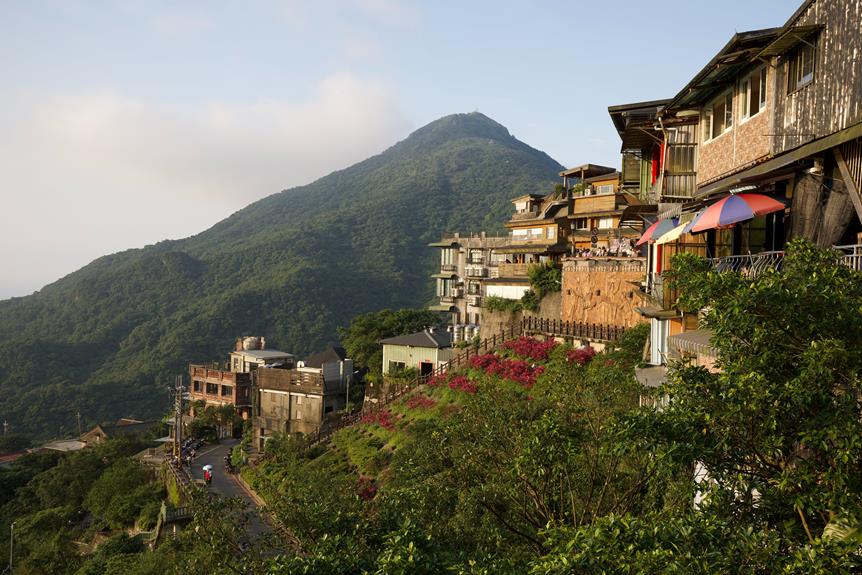Located in Bangladesh, Dhaka Division is a metropolis that exudes a rich historical and cultural heritage. With a population of over 44 million, it stands as one of the most populous divisions globally, showcasing its vibrant and dynamic nature. Nestled amidst the borders of multiple divisions, Dhaka Division holds a unique position that has shaped its identity throughout the ages. From its intriguing etymology to its illustrious past as a capital city, Dhaka Division has witnessed the ebb and flow of empires and the rise of cultural significance. But what makes Dhaka Division truly captivating is not just its past, but its present and future as a bustling economic hub and a canvas for architectural marvels. Join me as we explore the historic and vibrant metropolis that is Dhaka Division.
Geography and Population
Dhaka Division, located within Bangladesh, is a captivating administrative division boasting a rich geographical landscape and a population of over 44 million. This division covers an area of 20,508.8 square kilometers and is the most populous country second-level division in the world. Dhaka Division is bordered by every other division in Bangladesh except Rangpur Division. To the north lies Mymensingh Division, while Barisal Division is located to the south. Chittagong Division is situated to the east and southeast, while Sylhet Division is to the northeast, and Rajshahi Division to the west. With a population growth rate of 1.94%, Dhaka Division is experiencing significant demographic trends. Overall, the geographical features and demographic trends of Dhaka Division contribute to its vibrant and diverse character.
Borders and Location
Situated within the captivating administrative division of Dhaka, the borders and location of this historic metropolis in Bangladesh are as diverse and intriguing as its geography and population. Dhaka Division shares borders with every other division in Bangladesh, except Rangpur Division. To the north lies Mymensingh Division, while Barisal Division is situated to the south. Chittagong Division is located to the east and southeast, and Sylhet Division to the northeast. Finally, Rajshahi Division is positioned to the west. This strategic location has contributed to Dhaka Division's prominence as a major transportation hub in the country. Its well-developed transportation network connects it to various tourism attractions within and outside the division, making it easily accessible for both domestic and international travelers.
Etymology
With a name that carries a rich and intriguing history, the etymology of Dhaka Division reveals fascinating insights into the origins and cultural significance of this vibrant metropolis. The name "Dhaka" has multiple possible origins. One theory suggests that it may derive from the dhak tree or Dhakeshwari, the patron goddess of the region. Another theory posits that Dhaka refers to a musical instrument called dhak. References to Dhaka Bhasa, a Prakrit dialect, and the term Dhakka used in the Rajtarangini further add to the complexity. According to the Rajtarangini, Dhaka means "watchtower" and was likely used for fortification purposes. Originally known as Dhakka, the city has transformed over the centuries, becoming the bustling metropolis it is today.
History
Spanning centuries of rich and diverse heritage, the history of Dhaka Division is a captivating journey through the rise and fall of empires, the flourishing of trade and culture, and the transformation of a city that has stood the test of time. The influence of Islamic rule shaped Dhaka's history significantly, particularly during the Delhi and Bengal Sultanates. Under Islamic rule, the political center shifted to Sonargaon, which became the administrative hub. Dhaka gained prominence as the capital of Bengal Subah in 1610. During this period, the city played a vital role in the muslin trade, leading to muslin being called "daka" in distant markets. Dhaka was home to one of the richest elites in Mughal India, and the region became a hotbed for European rivalries. The Battle of Plassey in 1757 marked the decline of the independent Nawabs and the increasing British influence in the region.
Cultural Significance
The cultural significance of Dhaka Division is evident in its rich history, vibrant traditions, and diverse heritage. This region has been a hub of art and literature, with renowned poets, writers, and artists calling it home. The city's rich cultural heritage is celebrated through its festivals and traditions, which showcase the vibrant and diverse communities that reside here. Dhaka Division is known for its colorful and lively festivals, such as Pohela Boishakh (Bengali New Year), Durga Puja, and Eid-ul-Fitr, which bring people from all walks of life together to celebrate and embrace their cultural identity. Additionally, the division's art and literature scene is thriving, with numerous galleries, theaters, and cultural centers showcasing the talents of local artists and performers. Dhaka Division truly embodies the essence of Bangladesh's cultural heritage.
Economic Importance
Having explored the cultural significance of Dhaka Division, it is essential to now shift our focus towards its significant economic importance. Dhaka Division has witnessed remarkable economic growth and has become a major hub of industrial development in Bangladesh. The division's strategic location and favorable business environment have attracted both domestic and international investors, resulting in the establishment of numerous industries and businesses. Dhaka Division is known for its thriving textile, pharmaceutical, and manufacturing sectors, contributing significantly to the country's GDP. The division's industrial development has not only created employment opportunities for the local population but has also played a crucial role in boosting the overall economy of Bangladesh. With its continuous economic growth and industrial expansion, Dhaka Division has emerged as a key economic powerhouse in the region.
Architectural Marvels
Dhaka Division is adorned with an array of architectural marvels that showcase the rich history and cultural heritage of the region. From ancient palaces to monumental mosques, the division is home to numerous historic landmarks that have stood the test of time. These architectural marvels continue to captivate visitors with their intricate designs and grandeur.
- Lalbagh Fort: Built in the 17th century by Mughal Emperor Aurangzeb, this magnificent fort is a testament to the architectural brilliance of the Mughal era. It features beautiful gardens, intricate carvings, and a stunning mosque within its premises.
- Ahsan Manzil: Also known as the Pink Palace, this iconic structure was once the residence of the Nawabs of Dhaka. With its distinctive pink facade and European architectural influences, it is a true gem of Dhaka's architectural heritage.
- Star Mosque: This stunning mosque is renowned for its breathtaking blue star motifs that adorn its walls. Built in the early 19th century, it is a fine example of the fusion of Mughal and British architectural styles.
These architectural marvels not only provide a glimpse into the past but also serve as a reminder of the rich cultural heritage that Dhaka Division holds.
Modern-day Dhaka
With its bustling streets, modern infrastructure, and vibrant cultural scene, Dhaka Division has transformed into a thriving metropolis in recent years. This dynamic city has witnessed significant contemporary developments, attracting both local and international attention. The table below highlights some of the major contemporary developments and urbanization challenges faced by Dhaka Division:
| Contemporary Developments | Urbanization Challenges | Future Prospects |
|---|---|---|
| 1. Construction of modern high-rise buildings | 1. Overpopulation and congestion | 1. Expansion of transportation infrastructure |
| 2. Development of shopping malls and entertainment centers | 2. Inadequate waste management | 2. Implementation of sustainable urban planning |
| 3. Establishment of international schools and universities | 3. Limited green spaces and recreational areas | 3. Enhancement of environmental conservation efforts |
| 4. Improvement of transportation networks, including metro rail and flyovers | 4. Insufficient housing for the growing population | 4. Creation of affordable housing initiatives |
| 5. Emergence of a vibrant arts and cultural scene | 5. Air and water pollution | 5. Promotion of eco-friendly practices |
As Dhaka Division continues to evolve, it faces the challenge of balancing urbanization with sustainable development. Efforts are being made to address the urbanization challenges and create a more livable and environmentally-friendly city for its residents.
Frequently Asked Questions
What Is the Economic Importance of Dhaka Division?
The economic importance of Dhaka Division lies in its significant role as a major center for economic development and growth potential. With a population of over 44 million, the division serves as a hub for various industries, including textiles, garments, pharmaceuticals, and IT services. Its strategic location, well-connected transportation network, and skilled workforce make it an attractive destination for national and international businesses. The division's thriving economy contributes significantly to the overall economic growth of Bangladesh.
Are There Any Architectural Marvels in Dhaka Division?
Dhaka Division is home to several architectural marvels and historical landmarks. The division boasts iconic structures such as the Dhakeshwari National Temple, which is dedicated to the patron goddess of the region. The Lalbagh Fort, a 17th-century Mughal fort, is another notable attraction. The Ahsan Manzil, also known as the Pink Palace, is a stunning example of Indo-Saracenic architecture. These landmarks showcase the rich history and cultural significance of Dhaka Division, making it a must-visit destination for architectural enthusiasts.
How Has Dhaka Evolved Into a Modern-Day City?
Dhaka has undergone a remarkable transformation into a modern-day city. The urban development and infrastructure transformation have played a pivotal role in this evolution. Over the years, Dhaka has experienced rapid growth, with the establishment of modern amenities, skyscrapers, and improved transportation networks. The city's skyline is now adorned with architectural marvels and contemporary structures. This transition has not only enhanced the city's aesthetic appeal but also improved the quality of life for its residents. Dhaka's journey from a historic capital to a vibrant metropolis is a testament to its continuous progress and development.
What Are Some Unique Cultural Traditions in Dhaka Division?
Dhaka Division, with its rich cultural heritage, is known for its unique and vibrant festivals. The division is home to numerous festivals that showcase the diverse traditions and customs of the region. From the colorful celebrations of Pohela Boishakh, the Bengali New Year, to the mesmerizing performances during the Dhaka International Folk Festival, the city is alive with cultural events throughout the year. Additionally, Dhaka Division is famous for its delectable cuisine, offering a wide range of dishes that reflect the region's culinary diversity.
What Is the Significance of the Battle of Plassey in the History of Dhaka Division?
The Battle of Plassey, fought in 1757, holds great significance in the history of Dhaka Division. It marked the decline of the independent Nawabs and the beginning of British influence in the region. The battle led to the establishment of British East India Company's rule over Bengal, including Dhaka. This event shaped the political landscape of Dhaka Division and set the stage for further British colonization in the region. The Battle of Plassey remains a pivotal moment in Dhaka's history, impacting its development and cultural trajectory.





